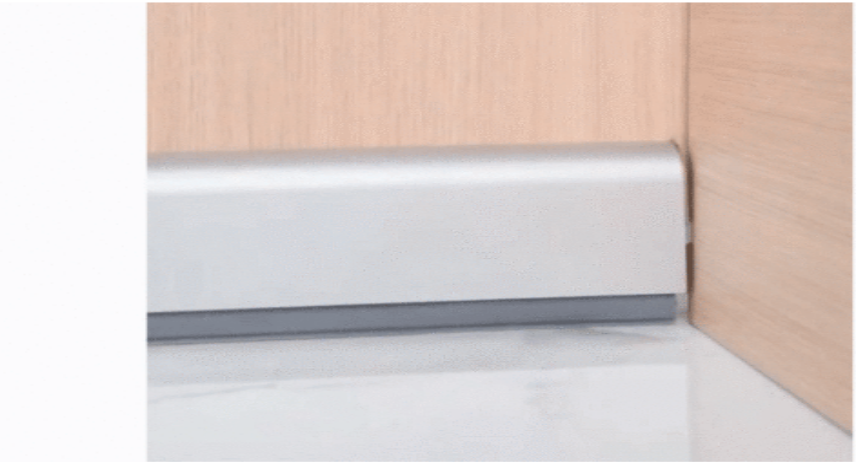Дек . 10, 2024 05:18 Back to list
gap sealing strip
Understanding Gap Sealing Strips A Comprehensive Guide
Gap sealing strips are essential components used in a variety of applications, from construction and manufacturing to automotive and home improvement. These strips are designed to fill the narrow spaces between two surfaces, ensuring a tight seal that prevents air, water, dust, and other unwanted elements from penetrating. In this article, we will explore the materials, applications, installation methods, and benefits of using gap sealing strips.
What are Gap Sealing Strips?
Gap sealing strips, often referred to as weather stripping or sealing tape, come in various shapes and materials. They are made from rubber, silicone, foam, or other synthetic materials that provide flexibility and durability. Their primary purpose is to create a barrier that enhances insulation and protects against environmental factors. By sealing gaps, these strips enhance energy efficiency and prevent loss of heated or cooled air within homes and buildings.
Materials Used in Gap Sealing Strips
1. Rubber Rubber sealing strips are popular due to their flexibility and resilience. They can withstand temperature fluctuations and are commonly used in doors, windows, and automotive applications.
2. Silicone Silicone strips are highly resistant to extreme temperatures and a variety of environmental conditions. They are often used in areas that require a more robust seal, such as in bathrooms and kitchens, where exposure to moisture is a concern.
3. Foam Foam sealing strips are lightweight and easy to install. They provide a soft barrier that conforms to the shape of gaps, making them ideal for irregular surfaces. Foam strips are often used in interior applications, such as between cabinets and walls.
4. Thermal Breaks Some gap sealing strips are designed as thermal breaks, enhancing energy efficiency by minimizing heat transfer. These are particularly useful in energy-efficient buildings.
Applications of Gap Sealing Strips
Gap sealing strips are versatile and can be utilized in various applications, including
- Residential and Commercial Buildings Sealing gaps around doors and windows helps to improve energy efficiency, reduce heating and cooling costs, and enhance indoor comfort.
- Automotive In the automotive industry, gap sealing strips are used to prevent water ingress and reduce road noise. They are often found around doors, trunks, and windows.
- Industrial Equipment In manufacturing, sealing strips help to keep out dust and debris from machinery, which can enhance performance and prolong equipment life.
- HVAC Systems Proper sealing of ducts and other HVAC components is crucial for efficient heating and cooling. Gap sealing strips can help to reduce leaks in these systems.
Installation of Gap Sealing Strips
gap sealing strip

Installing gap sealing strips is generally a straightforward process that can be done by homeowners or professionals. Here are the basic steps for installation
1. Measuring Measure the gaps that need to be sealed. Accurate measurements are essential for choosing the right size and type of sealing strip.
2. Selecting the Right Type Based on the application and the size of the gap, choose the appropriate sealing strip material.
3. Preparation Clean the surfaces where the sealing strip will be applied to ensure proper adhesion. Remove any dust, grease, or old sealing material.
4. Cutting Cut the sealing strip to the required length. Ensure the cuts are straight for a neat finish.
5. Application If the sealing strip is adhesive-backed, peel off the backing and press it firmly into place. For non-adhesive types, use appropriate adhesives or fasteners as needed.
6. Final Checks After installation, check to ensure that the strip fully seals the gap and that there are no visible spaces.
Benefits of Using Gap Sealing Strips
The benefits of using gap sealing strips are numerous
- Energy Efficiency By eliminating drafts and air leaks, sealing strips can help maintain consistent indoor temperatures, reducing energy costs.
- Improved Comfort Sealing gaps prevents discomfort from drafts and cold spots, enhancing the overall comfort of a living or working space.
- Protection from Elements Gap sealing strips provide a barrier against dust, insect infiltration, and water damage, preserving the integrity of your structures.
- Noise Reduction Sealing strips can help to reduce noise transmission, resulting in a quieter environment, especially in urban settings.
Conclusion
Gap sealing strips are a vital solution for improving energy efficiency, comfort, and protection in various applications. Their versatility and ease of installation make them an excellent choice for anyone looking to seal gaps within their homes, buildings, or vehicles. With a variety of materials available, there is a sealing strip designed for every need, ensuring that your spaces remain comfortable and protected from the elements. Whether you are a DIY enthusiast or a professional contractor, understanding and utilizing gap sealing strips can lead to more efficient and comfortable environments.




